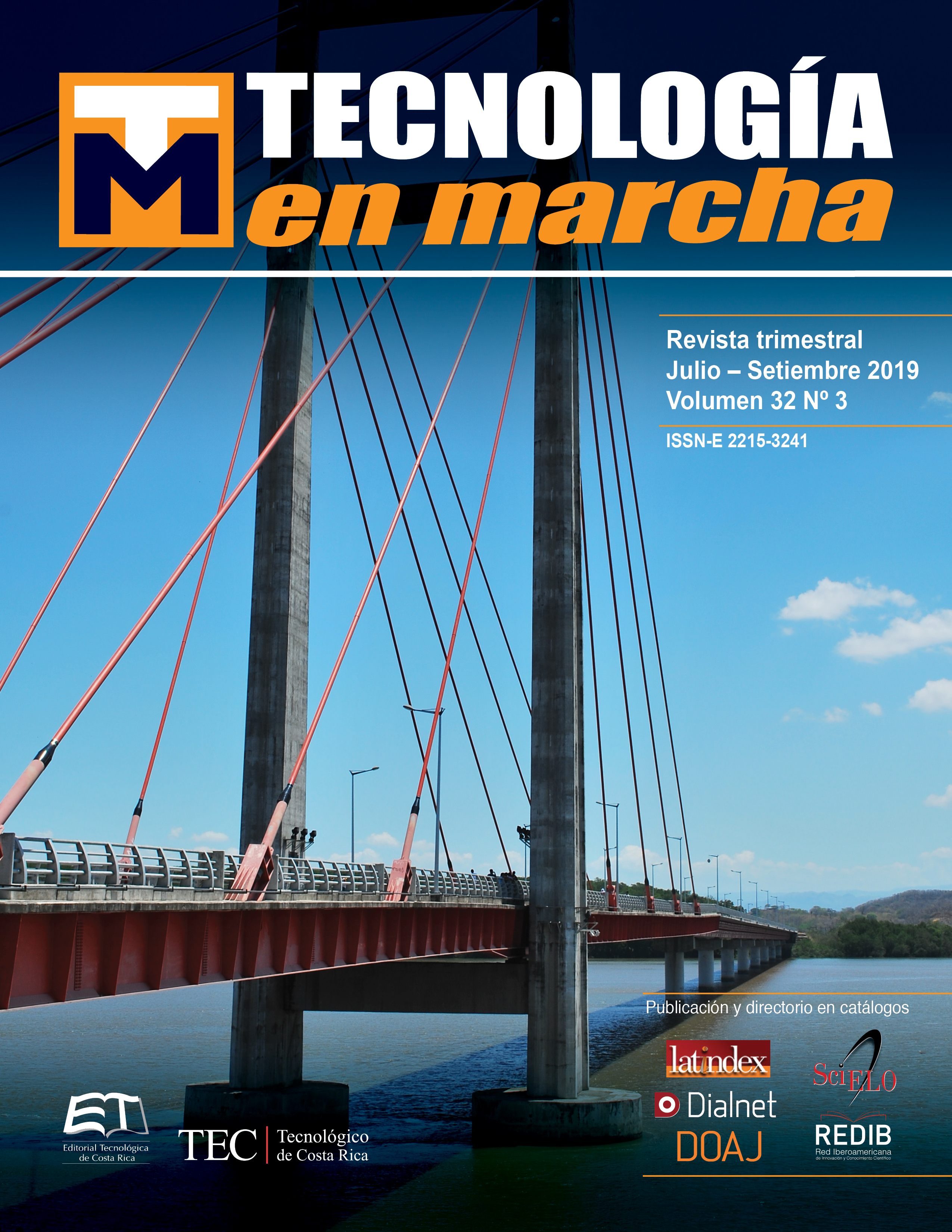Minerías artesanales para la extracción de oro mediante el uso de mercurio: Estado del arte del impacto ambiental en los medios agua, aire y suelo
Contenido principal del artículo
Resumen
La minería artesanal a pequeña escala (MAPE), como economía de subsistencia, ha tenido un auge importante en los últimos años debido al aumento en el precio del oro, generando impactos ambientales y socioeconómicos. El uso de la técnica de extracción de oro con amalgamas de mercurio y descomposición térmica para la purificación del metal; genera al menos cinco problemas ambientales: degradación de la tierra, deforestación, contaminación y sedimentación de cursos de agua, contaminación atmosférica y degradación de la salud de la fauna y los seres humanos. La forma orgánica del mercurio es la más tóxica, puede bioacumularse y biomagnificarse a través de la cadena trófica. En el presente estudio se realiza una descripción del estado del arte de la MAPE a nivel mundial, así como sus implicaciones socioeconómicas y ambientales. Se determinó que la innovación en las técnicas utilizadas por la MAPE; ayudarían a la reducción y futura eliminación del uso del mercurio; así como la generación de regulaciones o leyes que garanticen la sostenibilidad ambiental y un adecuado desarrollo socioeconómico de los mineros artesanales y de pequeña escala.
Detalles del artículo
Los autores conservan los derechos de autor y ceden a la revista el derecho de la primera publicación y pueda editarlo, reproducirlo, distribuirlo, exhibirlo y comunicarlo en el país y en el extranjero mediante medios impresos y electrónicos. Asimismo, asumen el compromiso sobre cualquier litigio o reclamación relacionada con derechos de propiedad intelectual, exonerando de responsabilidad a la Editorial Tecnológica de Costa Rica. Además, se establece que los autores pueden realizar otros acuerdos contractuales independientes y adicionales para la distribución no exclusiva de la versión del artículo publicado en esta revista (p. ej., incluirlo en un repositorio institucional o publicarlo en un libro) siempre que indiquen claramente que el trabajo se publicó por primera vez en esta revista.
Citas
[2] Y. Male, A. Reichelt, M. Pocock, and Nanlohy, “Recent mercury contamination from artisanal gold mining on Buru Island, Indonesia – Potential future risks to environmental health and food safety”. Marine Pollution Bulletin, vol.77, pp.428–433, 2013
[3] S. Bose, R. Schierl, D.Nowak, U. Siebert, J. Frederick, W. Owi, Y. Ismawati, and I.Ir, “A preliminary study on health effects in villagers exposed to mercury in a small-scale artisanal gold mining area in Indonesia”, Environmental Research, vol .149, pp.274–281, 2016
[4] UNEP, Global Mercury Assessment 2013: Sources, Emissions, Releases and Environmental Transport. UNEP Chemicals Branch, Geneva, Switzerland, 2013
[5] M. M. Veiga, G. Angeloci, and J. A Meech,”Review of barriers to reduce mercury use in artisanal gold mining” The Extractive Industries and Society, vol. 1, pp. 351–361, 2014
[6] J. Chételat, M. Amyot, P. Arp, , J.M. Blais, D. Depew, C.A. Emmerton, M. Evans, M Gamberg, N. Gantner, C. Girard, J. Graydon, J. Kirk, D. Lean, I. Lehnherr, D. Muir, M. Nasr, A.J. Poulain, M. Power,
[7] B. Gao, L Han, H. Hao and H. Zhou, “Pollution characteristics of mercury (Hg) in surface sediments of major basins, China”, Ecological Indicators, vol. 67, pp. 577–585, 2016
[8] G.P. Arrifano, R.C. Rodriguez, M. Jimenez, V. Ramírez, N.F. da Silva, J.R.Souza, M. Augusto, R.S. Paraense, B.M. Macchi, J.L.do Nascimento, and M.E.Crespo, “Large-scale projects in the amazon and human exposure to mercury: The case-study of the Tucuruí Dam”, Ecotoxicology and Environmental Safety, vol. 147, pp. 299–305, 2018
[9] K. Leopold, M. Foulkes, and P. Worsfold, ”Methods for the determination and speciation of mercury in natural waters-A review”, Analytica Chimica Acta, vol.663(2), pp.127–138,2010
[10] S. K Pandey, K. H. Kim, and R. J. C. Brown,” Measurement techniques for mercury species in ambient air” TrAC - Trends in Analytical Chemistry, vol. 30 (6), pp. 899–917, 2011
[11] R. Jagtap, and W. Maher, “Measurement of mercury species in sediments and soils by HPLC-ICPMS” Microchemical Journal, vol.121, pp.65–98, 2015
[12] F. Nyame, and J.A. Grant, “The political economy of transitory mining in Ghana: Understanding the trajectories, triumphs, and tribulations of artisanal and small-scale operators”, The Extractive Industries and Society, vol. 1, pp.75–85, 2014
[13] P.Li, X.B Feng, G.L Qiu, L.H Shang, and Z.G Li,” Mercury pollution in Asia: A review of the contaminated sites”, Journal of Hazardous Materials, vol.168, pp.591–601, 2009
[14] G. Torkar, and Z. Zwitter, “Historical impacts of mercury mining and stocking of non-native fish on ichthyofauna in the Idrijca River Basin, Slovenia” Aquat Sci, vol. 77, pp. 381–39 , 2015
[15] H. Gutiérrez, S.B. Sujitha, M. P. Jonathan, S.K Sarkar, F. Medina, H. Ayala, G. Morales, and L. Arreola, “Mercury levels in human population from a mining district in Western Colombia”, Journal of Environment Sciences, vol. 68, pp.83-90, 2017
[16] S. Dondeyne, and E. Ndunguru, “Artisanal gold mining and rural development policies in Mozambique”: Perspectives for the future. Futures, Vol.62, pp. 120–127, 2014
[17] K. Drace, A. M Kiefer, M. M Veiga, M. K Williams, B Ascari, K. A Knapper, and J. V. Cizdziel, “Mercury-free, small-scale artisanal gold mining in Mozambique : utilization of magnets to isolate gold at clean tech mine”. Journal of Cleaner Production, vol.32, pp. 88–95, 2012
[18] M.J. Clifford, “Future strategies for tackling mercury pollution in the artisanal gold mining sector : Making the Minamata Convention work ”, Futures, Vol 62, pp,106–112, 2014
[19] S. J. Spiegel, S. Agrawal, D. Mikha, K. Vitamerry, P. Le Billon, M. Veiga, K. Konolius, and B. Paul, “Phasing Out Mercury? Ecological Economics and Indonesia’s Small-Scale Gold Mining Sector” Ecological Economics, vol.144, pp.1–11, 2018.

